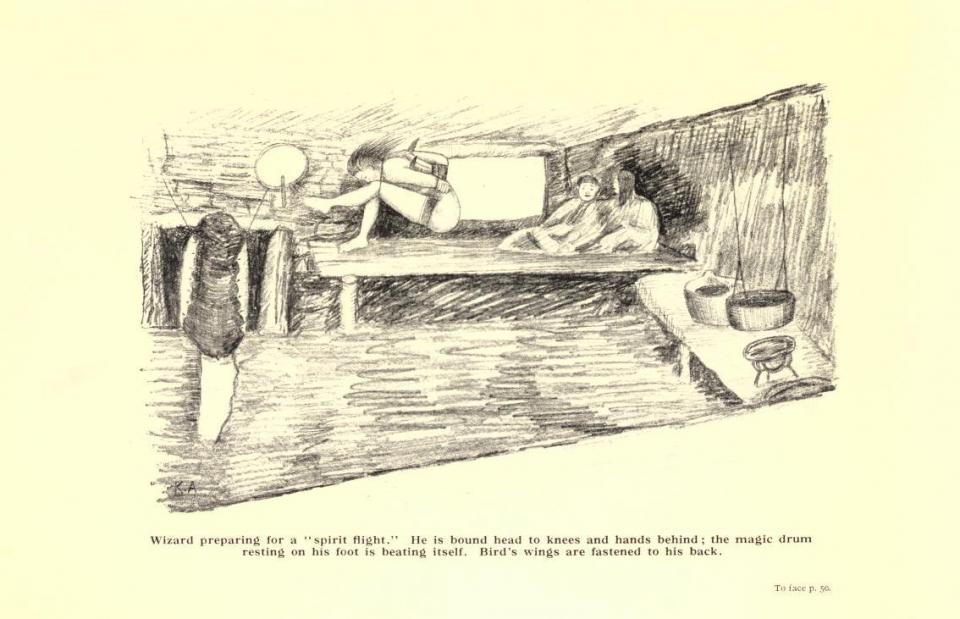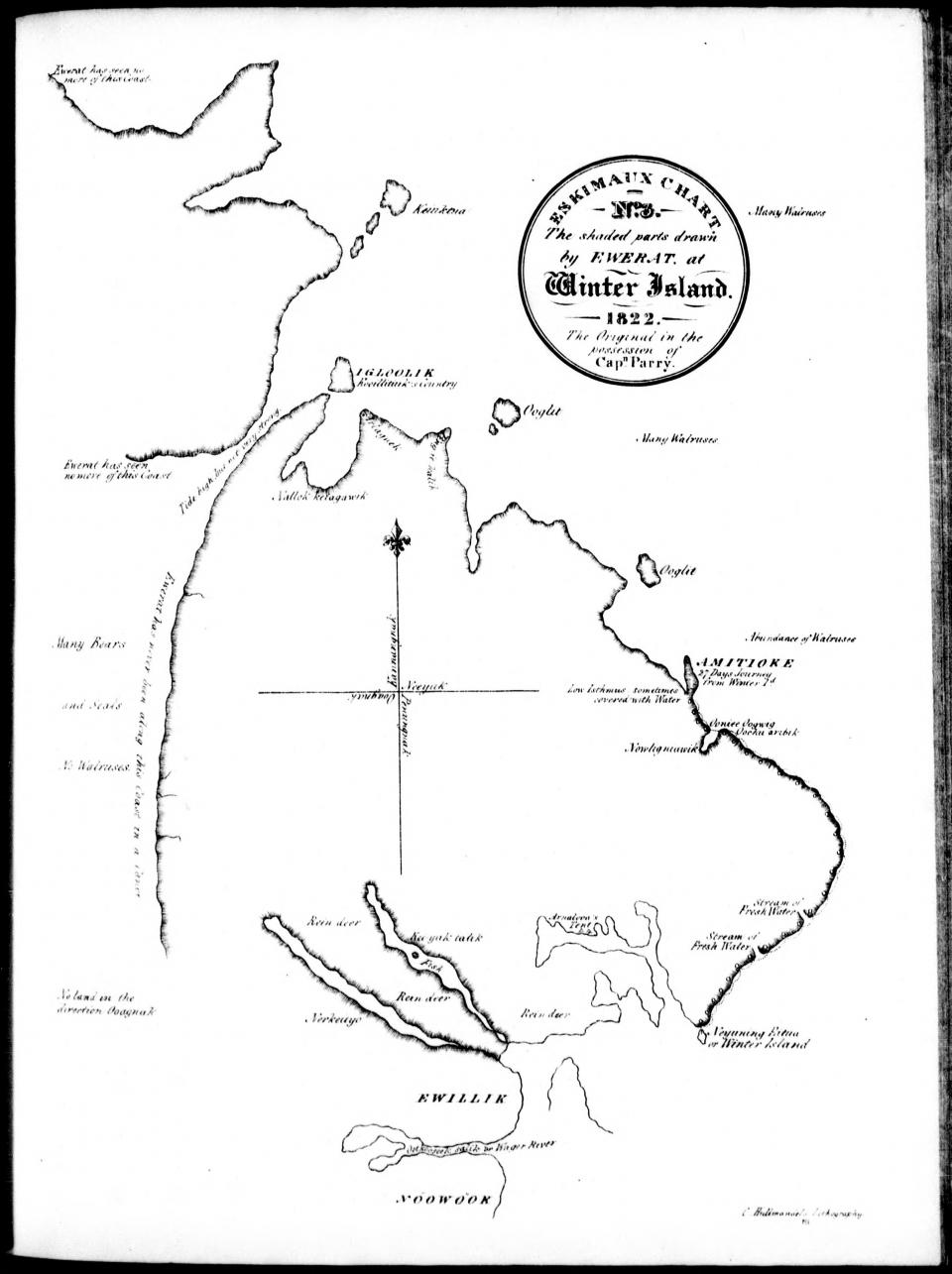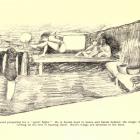By and large, British Arctic explorers lacked local knowledge of the environments through which they passed and, consequently, sometimes consulted Inuit shamans, whose geographical knowledge was known to be extensive. That these consultations could be made either in the formal atmosphere of the ship with maps and charts or during a shamanic séance in an indigenous hut is significant. Throughout the nineteenth century explorers derided shamanism as a superstition, yet at the same time remained fascinated by the shamanic séance.

Making a Tupilak
Making a Tupilak
Drawing from Knud Rasmussen’s Eskimo Folk-tales, to face p. 18
Click here to view Internet Archive source.
 This work is licensed under a Creative Commons Public Domain Mark 1.0 License.
This work is licensed under a Creative Commons Public Domain Mark 1.0 License.

Wizard preparing for a “spirit flight”
Wizard preparing for a “spirit flight”
Drawing from Knud Rasmussen’s Eskimo Folk-tales, to face p. 50
Click here to view Internet Archive source.
 This work is licensed under a Creative Commons Public Domain Mark 1.0 License.
This work is licensed under a Creative Commons Public Domain Mark 1.0 License.
For example, during an 1821–23 expedition to seek the Northwest Passage, Lieutenant William H. Hooper described how he asked an Iglulingmiut shaman, Toolemak, to perform “some of the ceremonies of Angetkokism.” Despite Hooper’s scepticism of Toolemak’s “conjurations,” he wanted the shaman to find out if the expedition’s ships could achieve a Northwest Passage. Following some chanting, Toolemak contacted his helping spirit [tuurngaq] (calling upon the British officers “to become his auxiliaries” in the process), who answered that their ships would not be able to reach their destination due to the quantity of ice and would then “return to Kabloona-noona” [white man’s land].

William Edward Parry, Eskimaux chart, no.3. In William Edward Parry, Journal of a Second Voyage for the Discovery of a North-West Passage from the Atlantic to the Pacific, 1822.
William Edward Parry, Eskimaux chart, no.3. In William Edward Parry, Journal of a Second Voyage for the Discovery of a North-West Passage from the Atlantic to the Pacific, 1822.
Click here to view Internet Archive source.
 This work is licensed under a Creative Commons Public Domain Mark 1.0 License.
This work is licensed under a Creative Commons Public Domain Mark 1.0 License.
This expedition, commanded by William Edward Parry, was indeed repelled by the ice at Fury and Hecla Strait and then departed the Canadian Arctic. Incidents such as this serve to remind us that Inuit and British cosmologies frequently overlapped, and for both communities the point of these séances was not just to display supernatural powers but to fulfill requests for environmental information. Geographical consultations with shamans, and the increasing appearance of British officers in these visions points to a more complex image of the relationship between imperialism, exploration, and indigenous environmental knowledge. Furthermore this relationship can be linked to broader ambivalent attitudes and cultures of curiosity in western encounters with “the supernatural.”
How to cite
McCorristine, Shane. “Seeking Environmental Knowledge from an Inuit Shaman.” Environment & Society Portal, Arcadia (2012), no. 1. Rachel Carson Center for Environment and Society. https://doi.org/10.5282/rcc/3679.
ISSN 2199-3408
Environment & Society Portal, Arcadia
 This work is licensed under a Creative Commons Attribution-NonCommercial-ShareAlike 3.0 Unported License.
This work is licensed under a Creative Commons Attribution-NonCommercial-ShareAlike 3.0 Unported License.
2012 Shane McCorristine
This refers only to the text and does not include any image rights.
Please click on the images to view their individual rights status.
- McCorristine, Shane. Spectres of the Self: Thinking About Ghosts and Ghost-Seeing in England, 1750–1920. Cambridge: Cambridge University Press, 2010.
- McCorristine, Shane. “The Supernatural Arctic: An Exploration.” Nordic Journal of English Studies 9, no. 1 (2010): 47–70.








